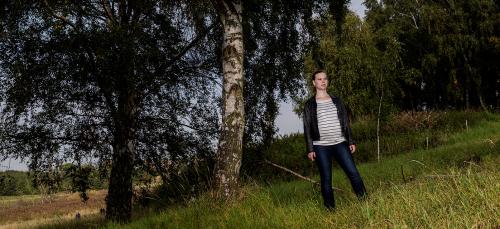Simplified narratives concerning climate change issues overshadow solutions

Trees are good for the environment, desert areas are too dry, and floods are bad.
These are three examples of simplified narratives concerning environmental and climate change issues that can become so dominant that they overshadow other narratives that also deserve our attention.
This is a recurrent theme in Associate Professor Mette Fog Olwig’s research projects, whether they have dealt with conditions in Ghana in West Africa, Tanzania in East Africa or Vietnam in Southeast Asia.
One example is the attitude to trees. It is common practice to attempt to resolve certain climate change problems by planting trees. But trees are not always an unconditional benefit for the environment or the climate.
"There are many different varieties of trees with various properties, but an influential narrative claims that planting trees in and of itself is good. So if you do that, you can get away with almost anything", says Mette Fog Olwig.
She has witnessed this in Tanzania where forest plantations have been established based on claims that they will benefit the environment. But on some plantations eucalyptus trees, for example, have been planted even though they are highly flammable, can deplete the soil and cause water shortages because they absorb large amounts of water. Eucalyptus trees, however, grow rapidly and produce lots of wood and they are therefore more attractive for investors looking for profit than they are environmentally friendly.
There are also a number of initiatives, for example under the auspices of the UN, whereby overproduction of CO2 can be compensated for by investing in forests in developing nations. Money is paid for every tree that is planted because trees bind carbon and can therefore help to counteract global emissions of CO2. But the situation is complicated and it requires enormous resources to assess the actual effect of the initiatives on the global CO2 budget. Such tree-planting projects can result in the local population being prevented from using the forest, which may have been vital for their survival. In other cases, forests have been planted in areas that were not forested previously with the result that locals cannot use the land for other purposes.
"In this way, the local population pays for the excess consumption of the rich, while the initiatives are marketed as beneficial to the environment", explains Mette Fog Olwig.
Narratives can serve a purpose
When researchers present climate change issues they often struggle to find a balance between overly complicated explanations that might lead to a paralysis of action and overly simplified explanations.
"Environmental and climate change issues are frequently described in a simplified way that ignores the more complex context. This can be a major dilemma for researchers, because they are well aware that the problems are more complex. Politicians and practitioners, however, often need clear-cut guidelines in order to act and other explanatory models therefore tend to be overshadowed", says Mette Fog Olwig.
Sometimes there is an agenda behind efforts to maintain a simplified narrative.
"It is not necessarily the simplified narratives as such that are the problem. But they can become so dominant that it becomes difficult to maintain a critical perspective on them. We forget that they are simplifications. But there may also be certain groups, who have an interest in maintaining a certain narrative because it serves a particular purpose. This could be a government sticking with an easy and inexpensive solution, an NGO that prioritises a goal that can be achieved relatively easily, or businesses with particular economic interests” she says.
Flooding: For better or worse?
Mette Fog Olwig conducted a project in northern Ghana, where trees are also highlighted as a solution to environmental problems. The narrative here is that larger numbers of trees will promote rainfall and thereby counteract the desertification, which, it is claimed, is a result of the local population felling too many trees and generally exploiting the environment.
"This narrative is so dominant that, even though it has been challenged by scientists, and even though northern Ghana is also experiencing flooding, one repeatedly hears from the authorities, local communities and NGOs, that the solution to the environmental problems in the area is to plant more trees. It’s an easy solution, because it places the responsibility on the local population”, says the researcher.
The dominant desertification narrative means that little attention was given to the specific problems that arise due to excessive rain and flooding.
In Vietnam, where Mette Fog Olwig has also done research, the situation is almost the reverse. It is frequently emphasized that Vietnam is highly affected by climate changes in the form of flooding. But parts of the country have always been very wet, and periodic flooding actually plays a vital role.
"In some places in Vietnam, a period with no flooding can become problematic because it results in too many rodents and insects in the fields, a lack of nutrients in the soil and reduced fishing opportunities", explains Mette Fog Olwig.
Think critically
The dominant narratives have a strong grip on the world community, from supranational organizations all the way down to the local level.
"A person from the World Bank and a local farmer will often repeat the same narrative", says Mette Fog Olwig.
It can therefore be difficult to adjust a particular narrative to local conditions in order to avoid adverse outcomes.
"It is easy to be misled by simplifications and we are often tempted by the easy version. But we need to think critically and to explore the motives that may be behind the dominant narrative, so that we can present alternative narratives and solutions”, she says.